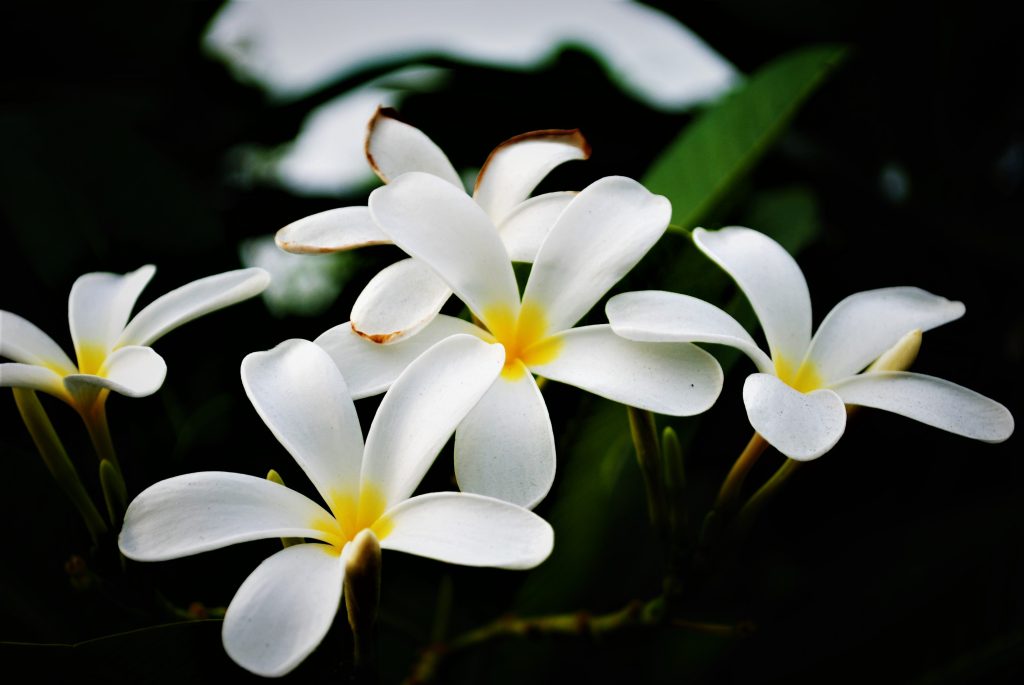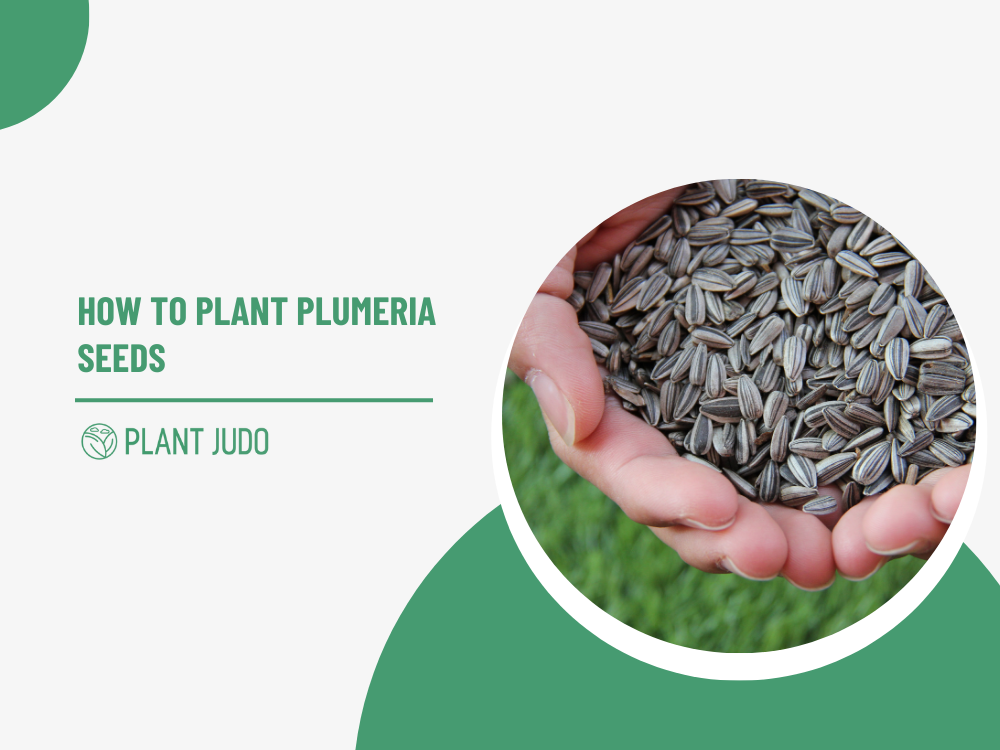Introduction
Plumeria is a tropical and subtropical flowering plant well-known for its scent and use in creating leis. Plumeria may be produced from seed, but it can also be successfully propagated from cuttings.
They come in various colours, and each has its own distinct smell. Even in colder climates, it develops quickly if exposed to full sunshine. If you plant it in a pot, it is pretty comfortable, but it will only grow to the size of the container.
This may be a lot of information, but the plumeria plant is relatively easy to manage and grow successfully from seeds if you follow the above recommendations.
Let’s start with what needs to be done before seeding the plumeria plant?
Seed selection is critical since seeds are responsible for the growth of a new plant. As a result, if we do not select friendly and healthy seeds, we will not achieve the desired results.
Sow seeds in the sterile seed-starting mix or potting soil, which may be purchased at nurseries and garden centres. Garden soil is overly heavy, contains weed seeds, and may include disease organisms.
We know that seeds require optimal amounts of water, oxygen, temperature, and light to germinate; therefore, before taking any steps to seed, check that these four essentials are met.
Plumeria seeds grow best in the spring but can germinate at any time if provided with appropriate moisture and warmth over 60 degrees Fahrenheit.

5 Ways To To Plant Plumeria Seeds
Planting seeds is probably not as difficult as you think. Growing plants from seed to maturity is one of the most enjoyable aspects of gardening.
But if you do not do it properly from beginning to end, you will not get the proper result. No worries, just follow our process and keep in mind all advice and recommendations that we will discuss in every step.
1. Moisten the Seeds first
Soaking seeds before planting weakens the seed’s natural defences against what Mother Nature anticipates, allowing it to germinate more quickly.
So, if you don’t soak your seeds before planting, germination time decreases, and the germination rate increases. Seeds with constant moisture flow to absorb have a considerably better chance of success.
Many sources recommend 8-12 hours, with a maximum of 24 hours. The soaking period will reduce if you use boiling water.
Finally, if any of the seedlings exhibit signs of mould during the germination phase, treat them soon with a mild fungicide.
2. Prepare The soil Properly
Although many plants may grow in less-than-ideal conditions, preparing the soil before planting can guarantee that your plants receive the nutrients and water they require to thrive.
A well-prepared field keeps weeds at home, recycles plant nutrients, and provides a soft soil mass for transplanting and a good surface for direct seeding.
Use a rake or hand fork to loosen the dirt. Break clumps of dirt and remove the trash. To generate the best growing conditions, enrich the soil with fertiliser and organic matter. Finally, make a flat surface to make seeds easy to plant.
3. Plant the Swollen Seeds
After moistening the seeds, form a 0.2-inch-wide hole in the mix (5mm). Push the plumeria seed gently into the mix. While planting seeds, make sure the swollen end of the seeds is at the bottom and the wing ends at the top. Allow a portion of this wing to extend from the soil.
4. Ensure little Greenhouse Effect
The greenhouse can provide a controlled environment for high-value seeds. Seeds germinated in a greenhouse environment are healthier and yield more significant outcomes. The architecture of a greenhouse is determined by the location’s latitude and the need for newly planted seeds.
To produce a mini-greenhouse effect, surround your plumeria, plant seeds with empty plastic containers, and cover them. However, do not expose the plastic container with the pot to direct sunlight as this will burn the newly germinated plant. Place it in a warm, well-lit location and inspect it often to ensure the soil does not dry out.
5. Wait for the Seeds to Germinate
Seed germination is a necessary process that impacts crop output and quality. Understanding the molecular components of seed dormancy and germination is critical for increasing agricultural output and quality. As a result, you must be concerned about the plumeria plant’s healthy germination.
If you plant it in a pot, it is pretty content, but it will only grow to the size of the container. Plumeria seeds commonly sprout in 3-14 days when planted properly. However, it can take up to a month, and if you don’t notice any healthy germination throughout this period, be sure the seed isn’t healthy and replace it with a new one.
6. Transplant the Seedlings
It’s time to transplant the seedlings once they’ve produced their second set of genuine leaves. The basic rule of thumb is that a seedling is ready to plant in the garden with three to four true leaves.
When you observe at least 3 or 4 true leaves and seedlings three inches tall, it’s time to transplant them to a larger pot. Gently take the seedlings from the culture pot and the peat moss or potting soil. After transplanting it to a new and larger pot, avoid placing it in full sunlight to avoid burning it. Instead, place it in a low-light setting for a few days or weeks.
Few Tips To Grow your New Seeding Properly
You need to keep in mind a few things to grow your seeding plant. It’s a bit different from regular planting from seeds.
- Use Large Container: When the roots of your seedlings have filled their current containers and their foliage is pushing out the neighbours, they are ready to be repotted. Moving your seedlings to larger containers will help them develop a robust root system and produce high-quality transplants for your garden. As a result, once seedlings get their first true leaves, you’ll need to transplant them into slightly larger pots.
- Keep Moist: Immediately after you have placed your transplants in their final locations in your pot. Check if their roots are in contact with the soil into which they were recently transplanted, and To encourage the roots to develop into the new soil, keep both the roots and the soil moist. It is critical to keep the soil moist but prevent overwatering, promoting illnesses that can damage fresh seedlings.
- Keep Soil Warm: Plant growth is influenced by warm soil. Plants will not grow properly, if at all, if the temperature is too cold or too hot. Soil nutrients and beneficial soil organisms thrive in ideal soil temperatures. Soil temperature is just a measurement of how warm the soil is. Most plants thrive in soil temperatures ranging from 65 to 75 degrees Fahrenheit (18-24 C.).
- Produce Enough Sunlight: Place seedlings in a shaded location, away from wind and direct sunlight, at first. Each day after that, expose plants to 30-60 minutes of filtered sunshine. By the end of the hardening-off period, seedlings should be getting the same amount of sunlight as in the garden.
- Ensure Enough Fertilizer: Give each seedling a cup of starting fertiliser a few days after transplanting to ensure that phosphorus, which promotes vigorous root development, is available in the root zone of fresh transplants.
FAQs
How long does plumeria take to grow?
Plumeria plants grown from cuttings can blossom in one to three years. On the other hand, trees developed from seeds can bloom three years after planting.
Should you soak plumeria seeds before planting?
Soaking seeds before planting softens the outer shell and weakens the seed’s natural defences against what Mother Nature expects, allowing it to germinate faster. Soaking a plumeria is an excellent approach to test its vitality.
How do you fertilise plumeria seedlings?
As a foliage spray, apply Bioblast 777 or a comparable fertiliser. If you use other balanced fertilisers, start with 1/2 strength and gradually increase over time. I get better root growth and more enormous trunks when using a balanced fertiliser.
Are coffee grounds good for plumeria?
Coffee grounds are considered acidifying, and Plumeria enjoys acidic soil, so that’s why you’ve been told that.
Final Words
Plumeria plants can be grown in a variety of methods.
White plumeria grows 24 to 36 inches per year under ideal conditions, whereas red plumeria grows 12 to 24 inches. During the growth season, the length of the leaves of each species may help you identify it.
Leave a comment below if you have any further questions concerning today’s article. We will do our best to get back to you as soon as possible with an answer.


